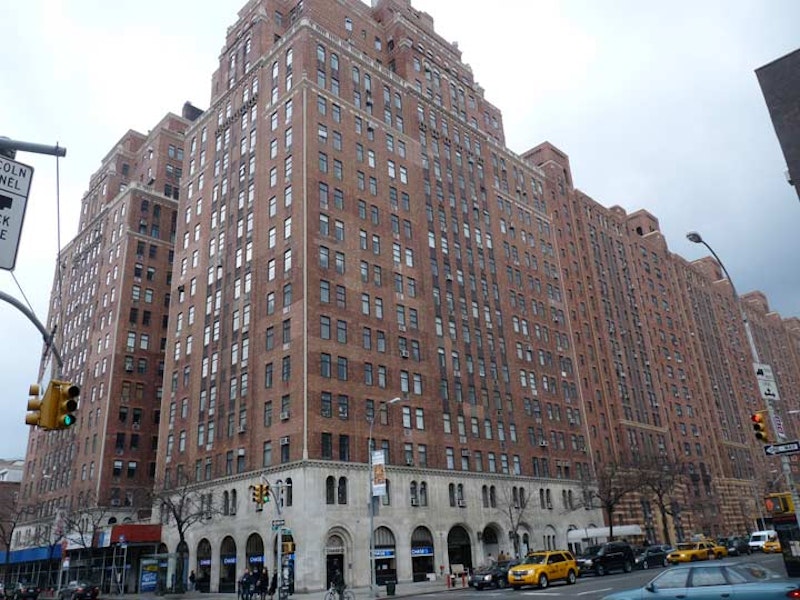One of my favorite apartment complexes in NYC (at least, one of my favorite exteriors), London Terrace, takes up the entire block between West 23rd and 24th, and 9th and 10th Avenues—one of the few developments in NYC that can make that claim. The complex consists of over 1,700 apartments in 14 connected buildings and was considered the largest apartment complex in the world when completed. The units surround a private garden and residents have access to a swimming pool and health club. One-bedrooms are in the $3,000s.

Developer Harry Mandel began acquiring land in this block during the late 1920s and construction began in 1929. The complex was named for an earlier development from the 1840s that was also known as London Terrace, as they were built to look like typical London apartments at that time. Much of the property was leased from the descendants of Clement Clarke Moore (of “A Visit from St. Nicholas” fame). Though the Moore family had a colonial-era residence in Newtown, now Elmhurst, Queens, Moore inherited his grandfather’s estate, “Chelsea,” and resided there until his death in 1863 at his summer residence in Newport, Rhode Island. He resisted the relentless grid plan that was under construction in midcentury Manhattan, and donated 66 acres that became today’s General Theological Seminary. His great-great grandson, also Clement Clarke Moore, laid the cornerstone for the new London Terrace in December 1929 and rental units first became available in mid-1930. The complex was constructed by the architectural firm Farrar & Watmough.

London Terrace from High Line Park
Farrar and Watmough completed the mid-block buildings facing West 23rd and 24th Streets by 1931, while the exterior buildings facing 9th and 10th Avenues were finished in 1934. Unfortunately, the Great Depression occurred just as the building began construction, and it fell into default in 1934. Developer Harry Mandel was wiped out in 1932, losing $14 million (about $240 million in today's money). Ultimately, though, London Terrace became a financial success because of its proximity to the brand-new 8th Avenue IND Subway. The 9th Avenue El also ran past it for about a decade after completion.

Presently, London Terrace is operated as two separate entities, London Terrace Gardens on the side streets (one entrance is shown here) and London Terrace Towers on 9th and 10th Avenues. As mentioned, High Line Park is now nearby and the region is rapidly gentrifying, for better or worse. An area highlight is the Half King, a bar/restaurant on West 23rd near 10th Avenue opened by adventure author Sebastian Junger that is home to literary readings.

In the AIA Guide to NYC, authors Norval White and Fran Leadon say: “This vast buff brick pile, in proto-modern planar style with faintly Gothic verticality, is actually two rows of connected apartment buildings flanking a block-long private garden. The name comes from a row of four-story houses that once stretched along the same 23rd Street frontages, facing the 18th Century Clarke mansion. When the building first opened, the doormen were dressed as London ‘bobbies’ as a play on the name.”

On the south side of West 23rd Street, facing London Terrace, you will find a handsome row of attached Italianate townhouses at #428-444. These were all built between 1855 and 1860 and were among the last parcels of Clarke’s estate that were optioned for development. Just east of the development, at what is now #420, is his birthplace, and according to legend “Visit” was composed after Clarke was inspired by a visit at one of the townhouses—though some Doubt remains that Clarke even composed “Visit.”

Collectively, the townhouses are now part of a co-op complex called Fitzroy Place. Supposedly, Fitzroy Road was a colonial-era thoroughfare that ran the path of today’s 8th Avenue, over a block to the east. However, if that’s true, it might have been better to call it The Abingdon, since 23rd Street occupies the roadbed of another colonial-era path, Abingdon Road.
Info credit: Chelsea Historic District Extension; Songlines for West 23rd.

